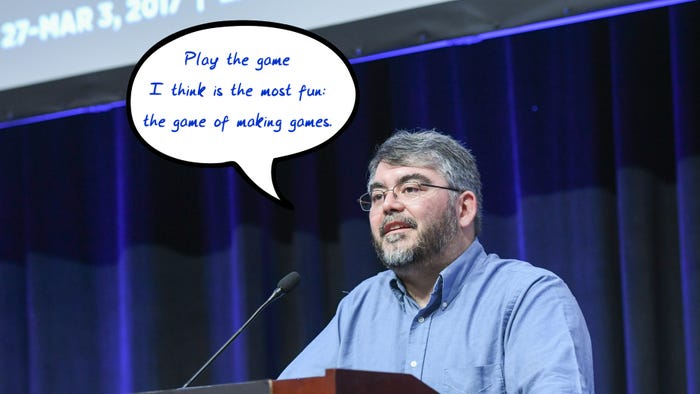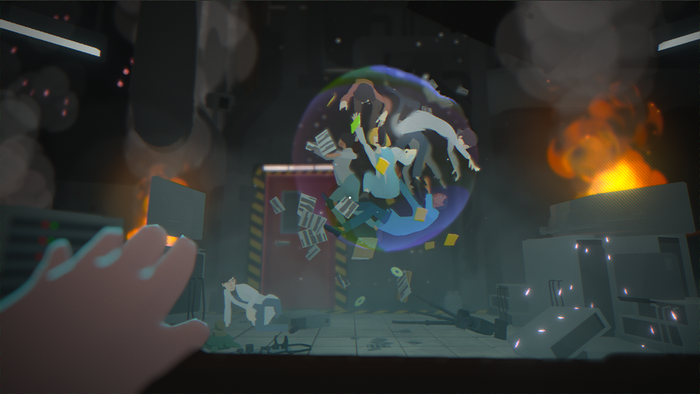The benefits and risks of using Patreon to crowdfund games
We speak to a number of developers to talk about the advantages of using Patreon, the challenge that comes from trying to keep a consistent number of subscribers, and whether or not it can be considered a viable option depending on your project.

Crowdfunding has become a common practice for independent developers and both big and small studios. Whether as the push to start up a new studio or as a way to fund a new IP, platforms like Kickstarter and Indiegogo are usually the first that come to mind. But recently, the monthly subscription-driven model of Patreon has been growing as an appealing alternative for funding development.
Gamasutra reached out to a number of developers to talk about the advantages of the platform, the challenge that comes from trying to keep a consistent number of subscribers, and whether or not it can be considered a viable option depending on your project.
Developing a game and a community simultaneously
“One of our main goals was to build a community as we were developing the game,” communications director Christine Gariépy for Paralives (a life simulation game similar to The Sims) said. “Inspired by the marketing first approach, we wanted to share progress updates to not only validate if there was interest, but also to generate it.”
To the Paralives team, Patreon seemed an ideal choice to make that foundation happen. The monthly subscription model means that “people can expect updates on a regular basis,” keeping them engaged in the development. This makes for one of the first differences to other crowdfunding platforms, where backers usually make a one-time payment and then wait for occasional updates from the studio.
Gariépy considered that following this model could lead to a “gathering place” where Patrons could feel they were able to participate more actively. For this, possibilities such as voting in polls, suggesting ideas on posts from the team or asking questions via private messages became vital tools to fulfill this idea. Currently the Paralives’ Patreon has 8,511 Patrons, making for a monthly income of $41,533 USD by the time of publication.

Choosing the right platform might be the first step, but it also comes down to offering compelling rewards to subscribers. “I think taking a subscription is a bigger step than a one-time payment,” game developer and CFO for Sokpop Collective Tijmen Tio told Gamasutra. “So at the very least you want to make it as easy as possible for people — you obviously want to go for a platform that's accessible and trusted.”
The nature of Sokpop Collective’s work already matched the nature of having a community around Patreon. The studio spent three years releasing two games a month, having recently switched to one per month instead, and the decision to use Patreon came from a pre-existing idea to set up a subscription model. They currently have 1,705 Patrons along with a $5,890 USD monthly income.
“In our case particularly,” Tio continued, “we had the challenge of connecting our reward (the games) to the subscription model. Patreon has integration for videos, images and text, but not a download button for Patrons only.”
Additionally, the team wanted to provide subscribers with limited access to titles that were eligible for in the past or even source code. Patreon's recent implementation of an integration for itch.io the Sokpop team chose it over other platforms, though eventually the team ended up building their own integration on their own website.
Momentum on a monthly basis
In other cases, such as Clout Games’ philosophy around the development of horror shooter ILL, aiming to have weekly updates isn’t a priority. Instead, they prefer occasional big updates showcasing new clips about the game or, more recently, progress updates about an upcoming demo.
“I can say that our community understands that it's better for everyone if we concentrate on the actual game development now rather than thinking about what to post on Patreon every week,” developer Maxim Verehin said in reference to the 856 Patrons they have to date, which make for a total of $3,366 USD per month.
The platform isn’t the team’s main income, as it can be “challenging to actually fund the whole production of a game this big.” Nevertheless, it serves as a big help with some expenses, even if the team foresees a loss of patrons as they’re planning to share less about ILL in the near future with their patrons. But there’s already a solid foundation set in stone. “You build a small community that is very interested and involved in the game's creation,” the developer added.

Maintaining a community on a monthly basis isn’t an easy task, and it can be tough to balance on top of everyday work and on-going development goals. Fostering one during a Patreon campaign can be beneficial in the long run, but having an audience as a pre-existing foundation has the potential to set the years to come in the right course early on.
Such is the case of Bay 12 Games, the studio behind Dwarf Fortress. A total of 3,302 Patrons (making for a monthly sum of $8,229 USD) are currently supporting their Patreon, which started back in early 2015. But the game has been in development since 2002, with a first release four years later. As they prepare to launch the game on Steam and itch.io sometime in the future, Tarn Adams reflected on their history building an audience, and the first steps into crowdfunding.
“We are a small operation,” he said. “So we have to balance our time; every part of the process feels like it could use more time.” For Bay 12 Games, the arrival to Patreon had the benefit of a decent-sized community being present beforehand. Starting with over 1,000 subscribers makes a difference, and helps to create a sense of confidence for new Patrons.
Adams explained that development logs were consistent throughout 2004 to 2019, and “release dates have always been all over the place”. Having existing players or followers of the project understanding this beforehand helped when creating the campaign. During 2020, the pandemic plus the new Steam model have “interfered with weekly updates just a bit,” now opting for bi-weekly updates instead.
“I can certainly imagine starting out on Patreon and then dropping off into a year-long news blackout as you work leading to people becoming upset,” Adams told Gamasutra. “But Kickstarter backers like their updates too, all the way through the campaign and then onward from funding to release. Updates are just generally a good idea!”
Benefits and risks
The premise of monthly subscriptions instead of a one-time payment can be daunting at first, but it depends on the studio’s vision for their project. The team behind Paralives sees it as a steady source of income, which allows them to better distribute their resources by aiming low and gradually expanding. “Some games that choose crowdfunding platforms with one-time payments realize that they have not properly assessed the duration of the project as well as the needs prior to the campaign,” Gariépy explained, “which often results in a lack of money during development.”
Another benefit is regarding funding, which is always open. Regardless of how late players discover their game, they can choose to contribute financially at any time, setting a big difference compared to Kickster campaigns, for example, which prevent latecomers from participating.
Gariépy admitted that choosing the option of monthly subscriptions has its fair share of challenges, and results will vary depending on the size of the studio, and how much time and resources they’re able to invest into the community aspect.
“One of the most important challenges is to maintain our level of income and to grow. This means we need to keep our community engaged by posting not only content on a regular basis, but also content that will be of interest to them. The majority of content posted on Patreon is exclusive, and it's sometimes hard to draw the line between what we should share only for our patrons and what we should share to the general public.”
There’s also the possibility of losing Patrons over time, making an impact on the expected monthly income. Planning and sharing big updates on social media, from development videos to blog posts, can make for a spotlight to attract new subscribers. In addition, Gariépy mentioned that the team has established other strategies to boost the Patreon if needed in the future, and remarked that “the simple fact of having multiple Plan Bs to lean on in the event of a drop reassures the team.”

Adams said that the monthly funding hasn’t been a source of worry for the team, but added that it tends to fluctuate often. “The initial pledges were tremendous, then it went up slowly, then it fades for a few months, and then the next time there is news of any kind, woosh, up to a new plateau and then we fade again, but never back to the old total. It has happened so many times now it's just part of the expected process for us.”
Big changes or announcements from Patreon have proven to be “somewhat more worrisome” when they happen to be related to changes in fee structures or who is allowed to use the platform. “That doesn't happen often, but in the last six years there've been a few incidents. Even then, we've never lost more than 6 or 7%. Which is something! But then at the next news it pops back.”
Adams’ view on the platform is dependent on the studio’s release model. It can be an option for supplemental income, but this might differ if there isn’t a pre-existing community, strong news pipeline, or a pre-release build for subscribers to play. Regardless, the plurality of options when it comes to crowdfunding is welcomed, and the more the studio knows its community the better.
“And just as with Kickstarter, you have to be careful with your reward tiers!” he concluded. “We ended our rewards entirely last year after becoming overwhelmed. It's possible to change gears (that worked fine for us), but you should be aware of how things scale and make sure you can change up if necessary without creating obligations you can't meet.”
About the Author(s)
You May Also Like







